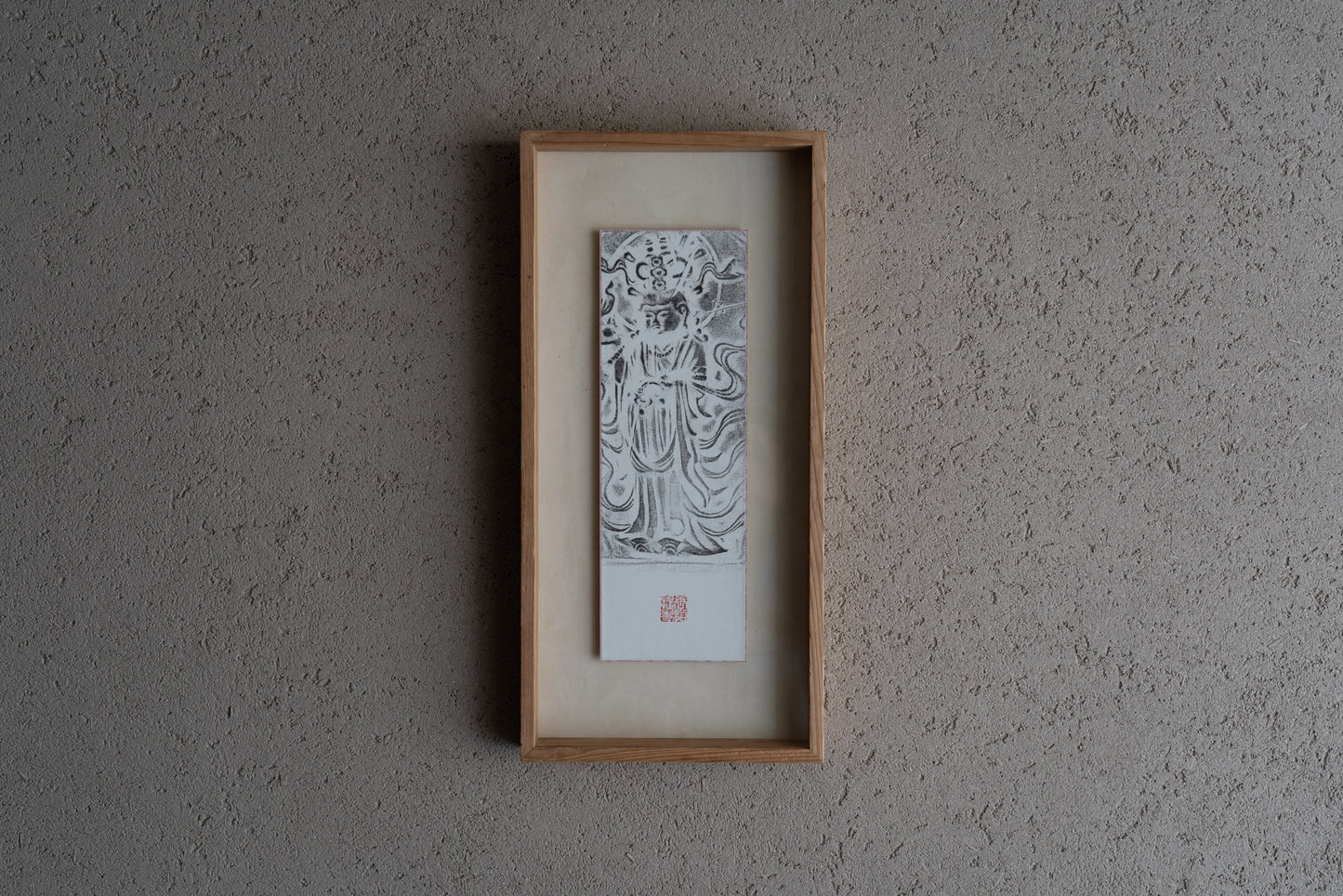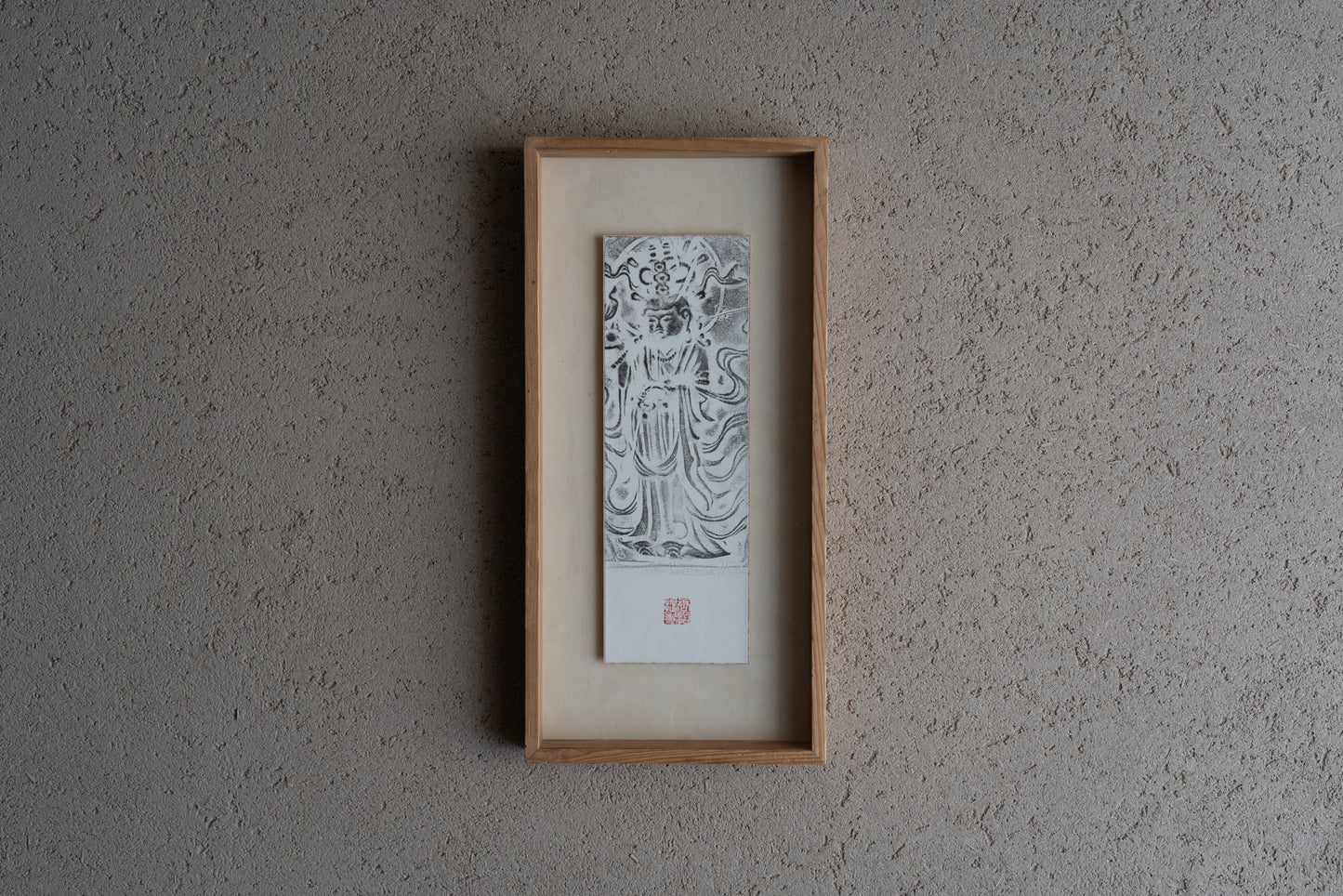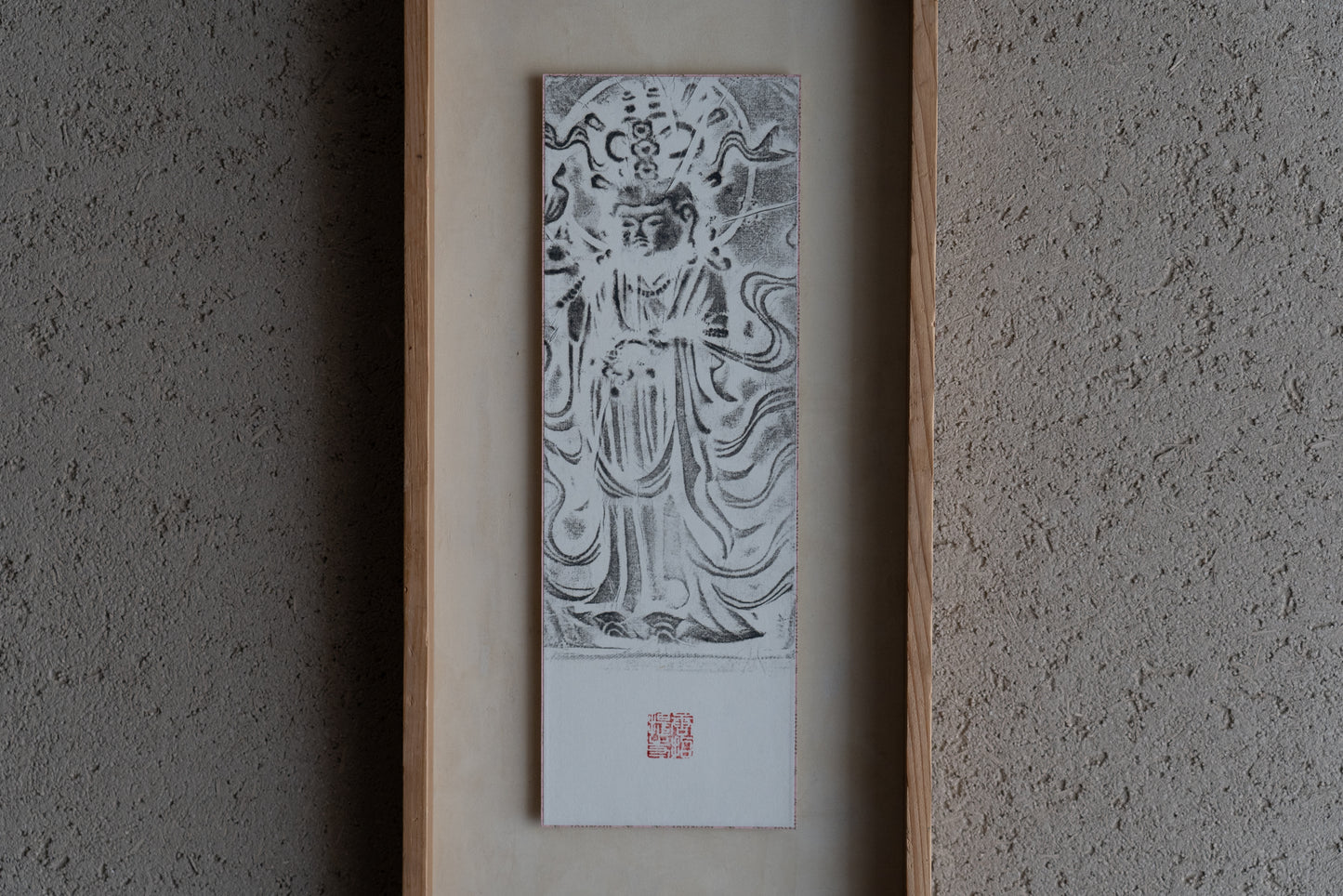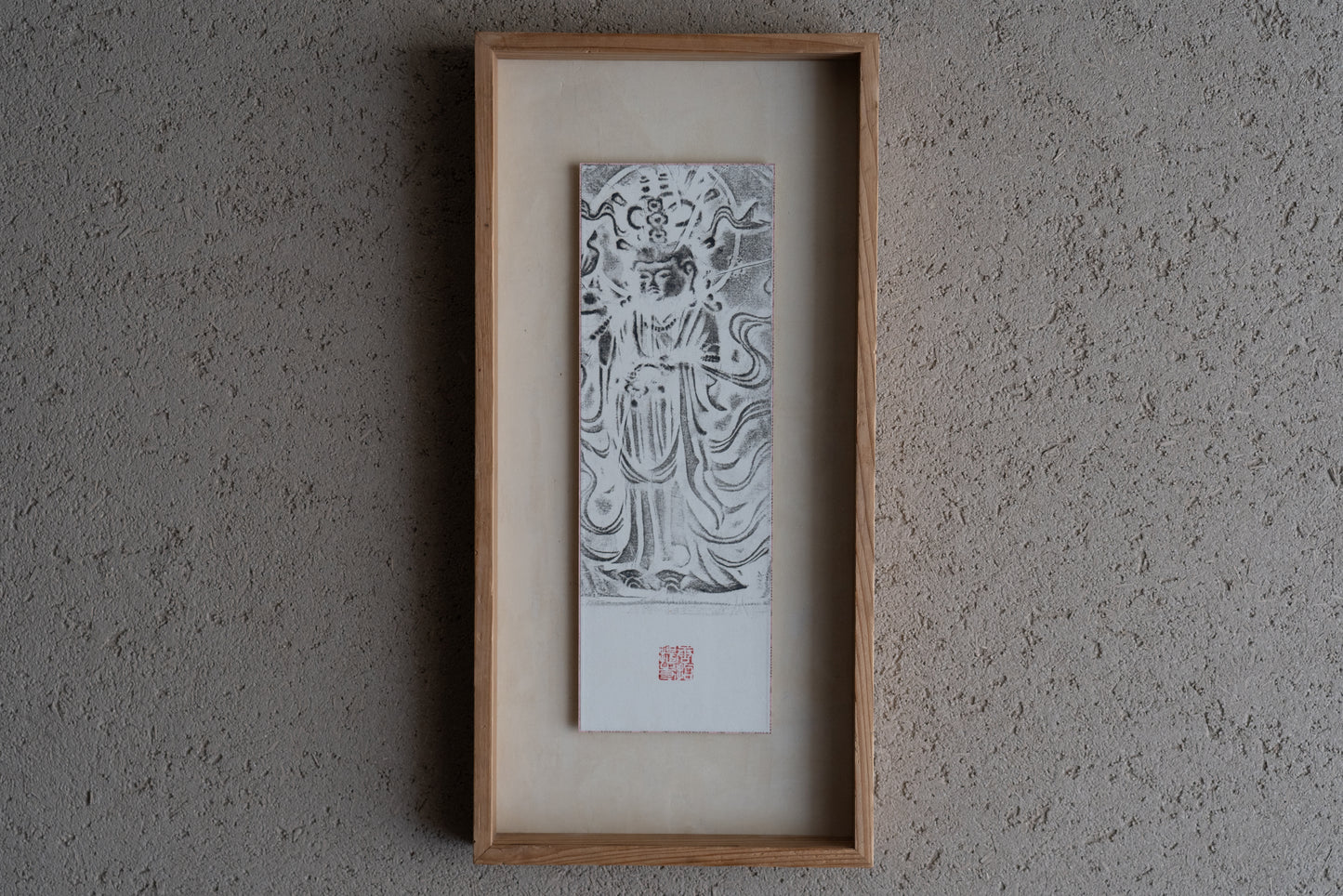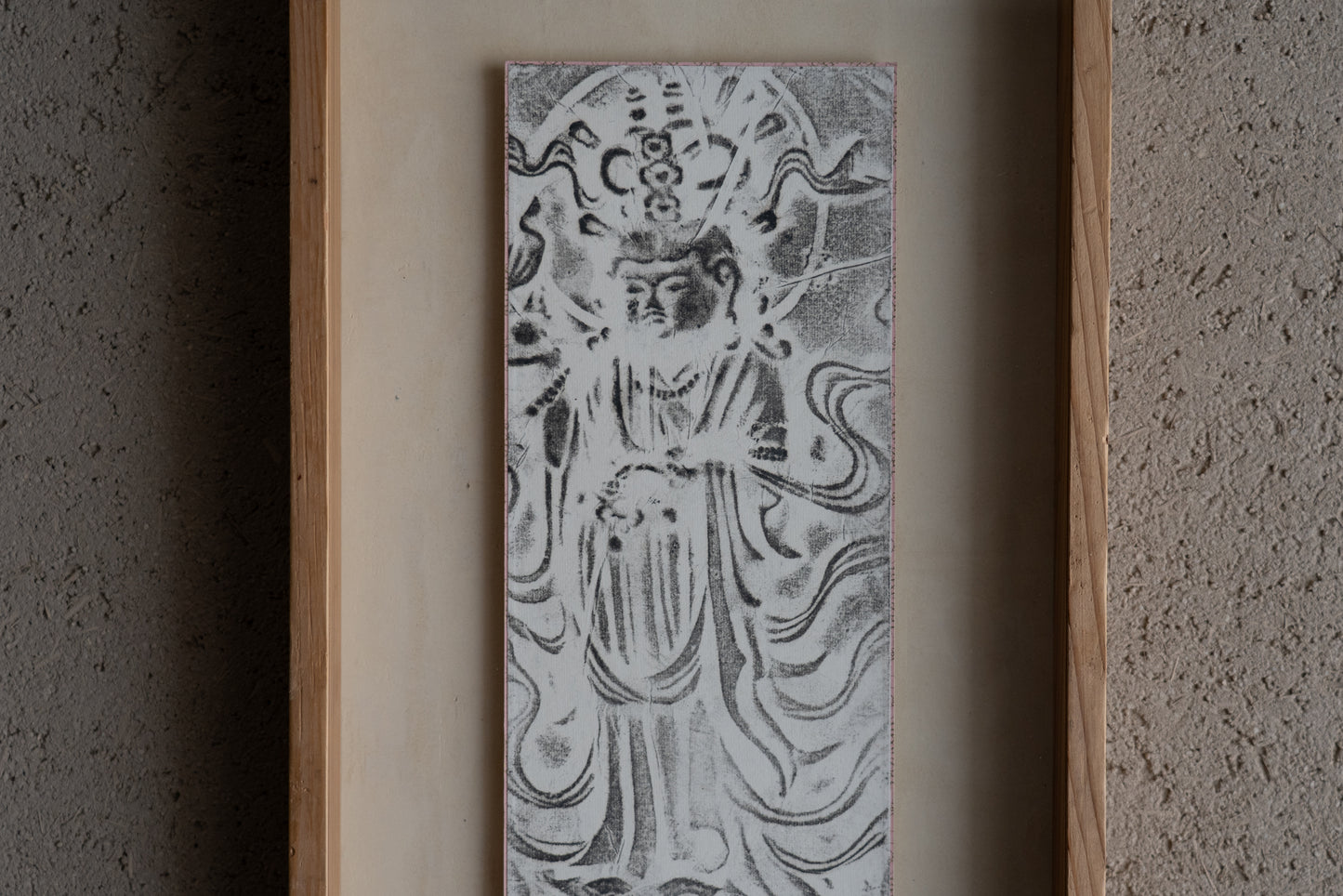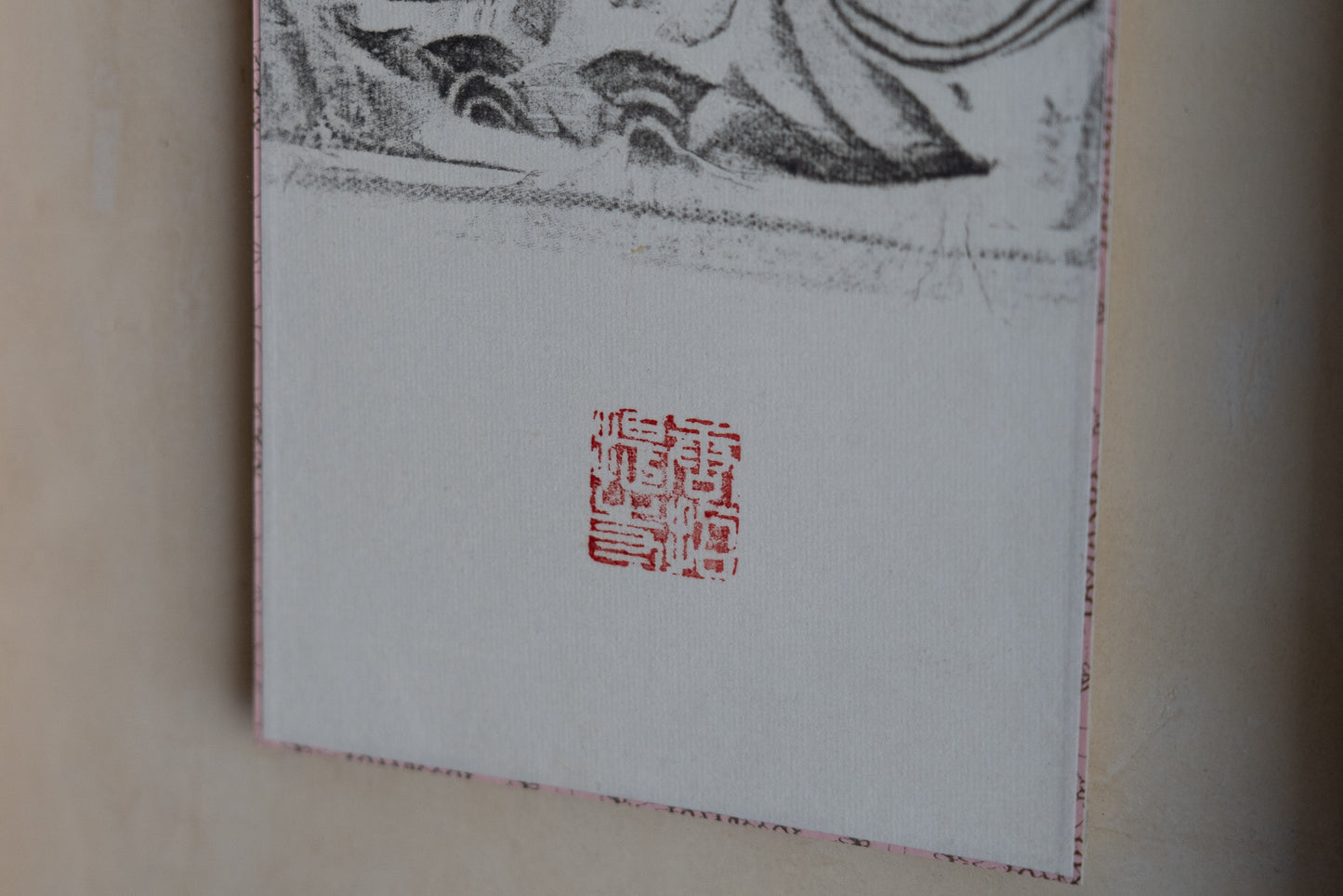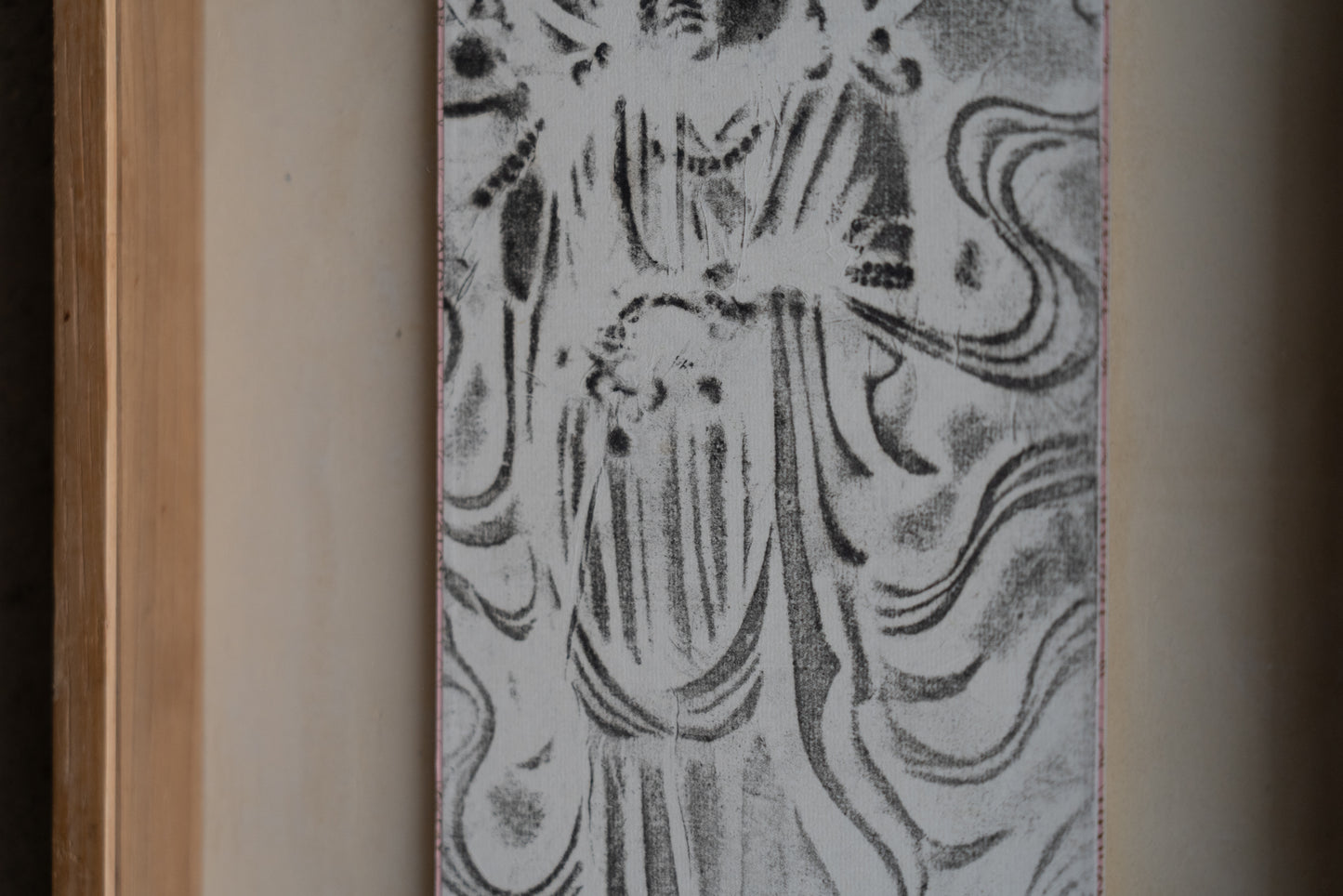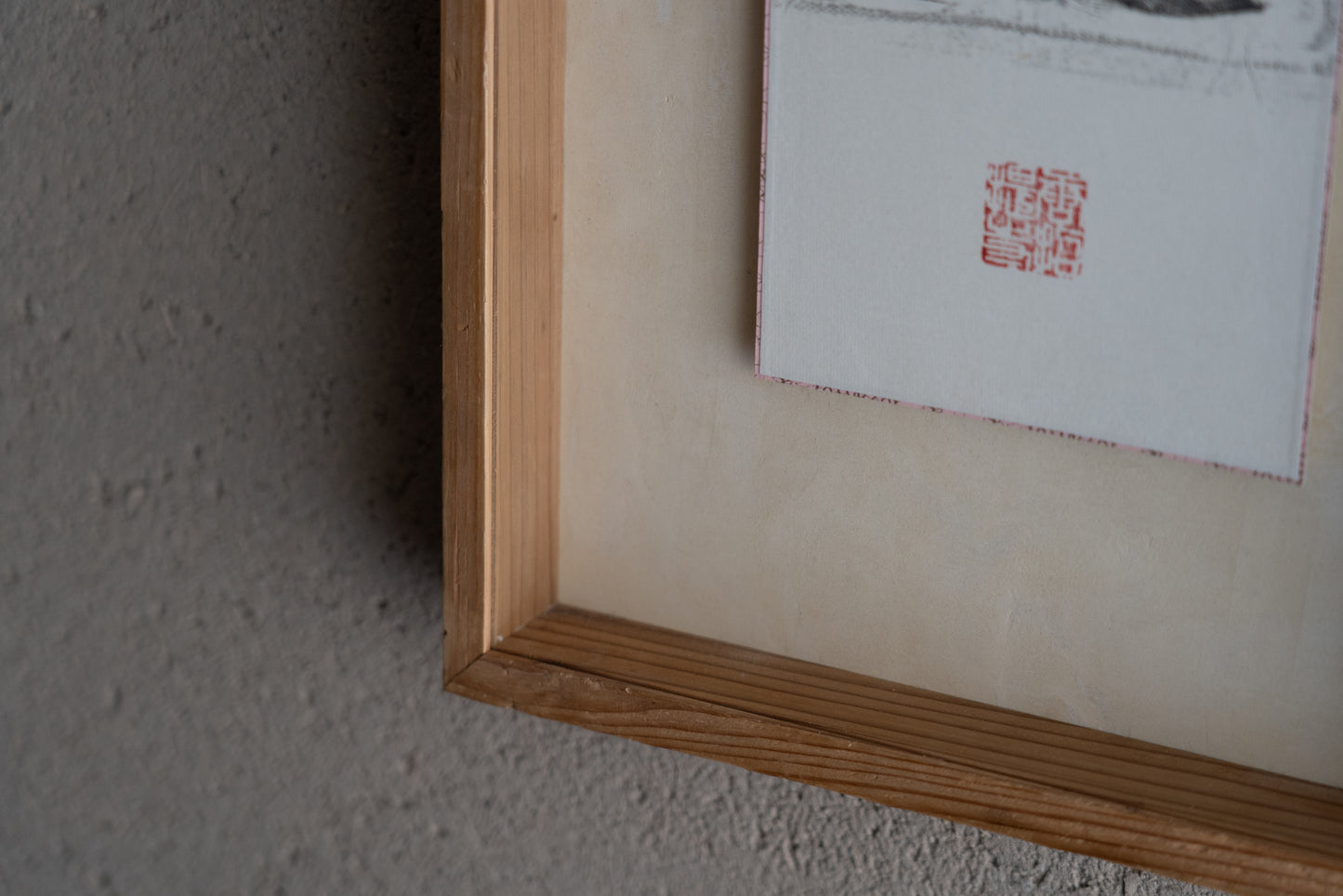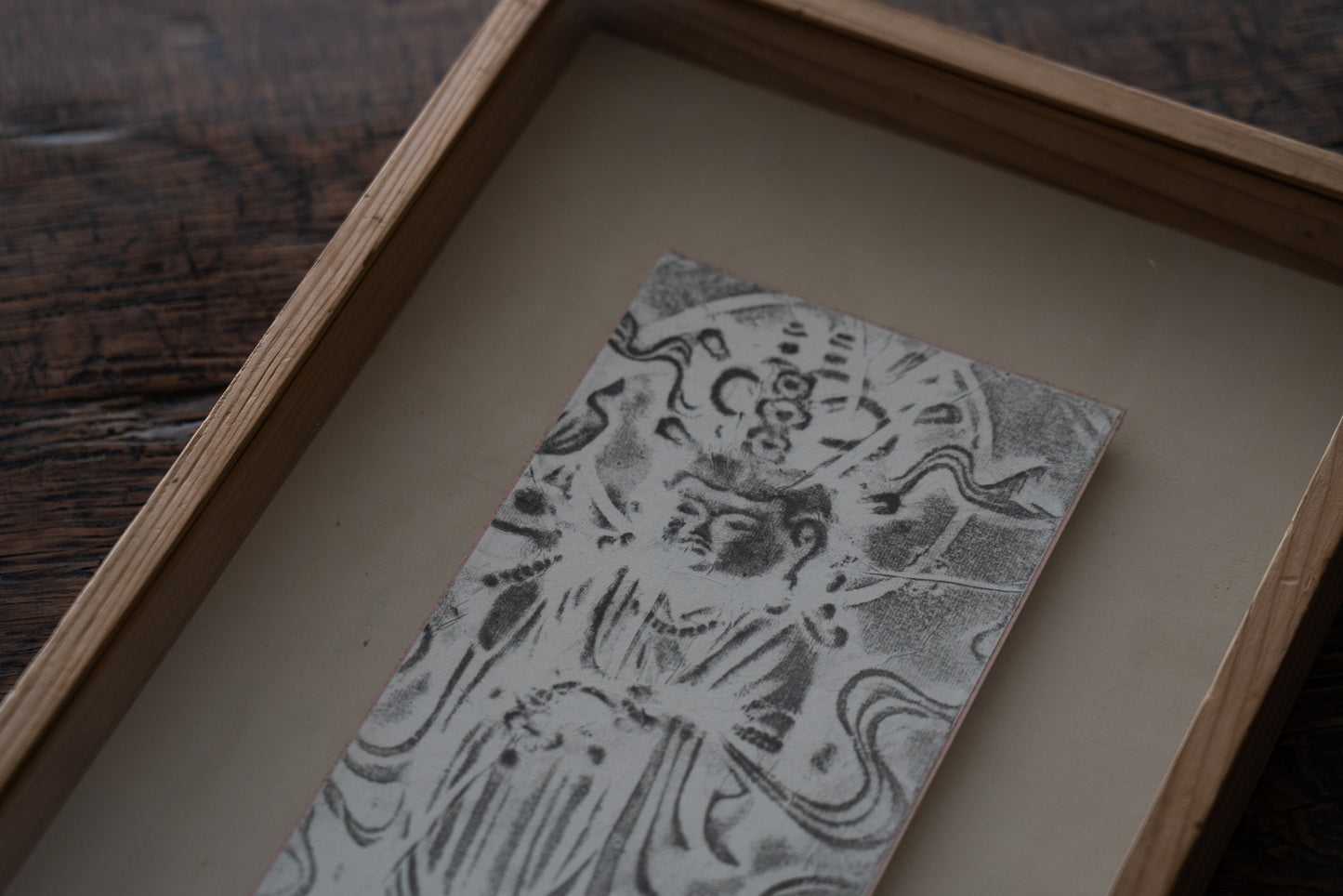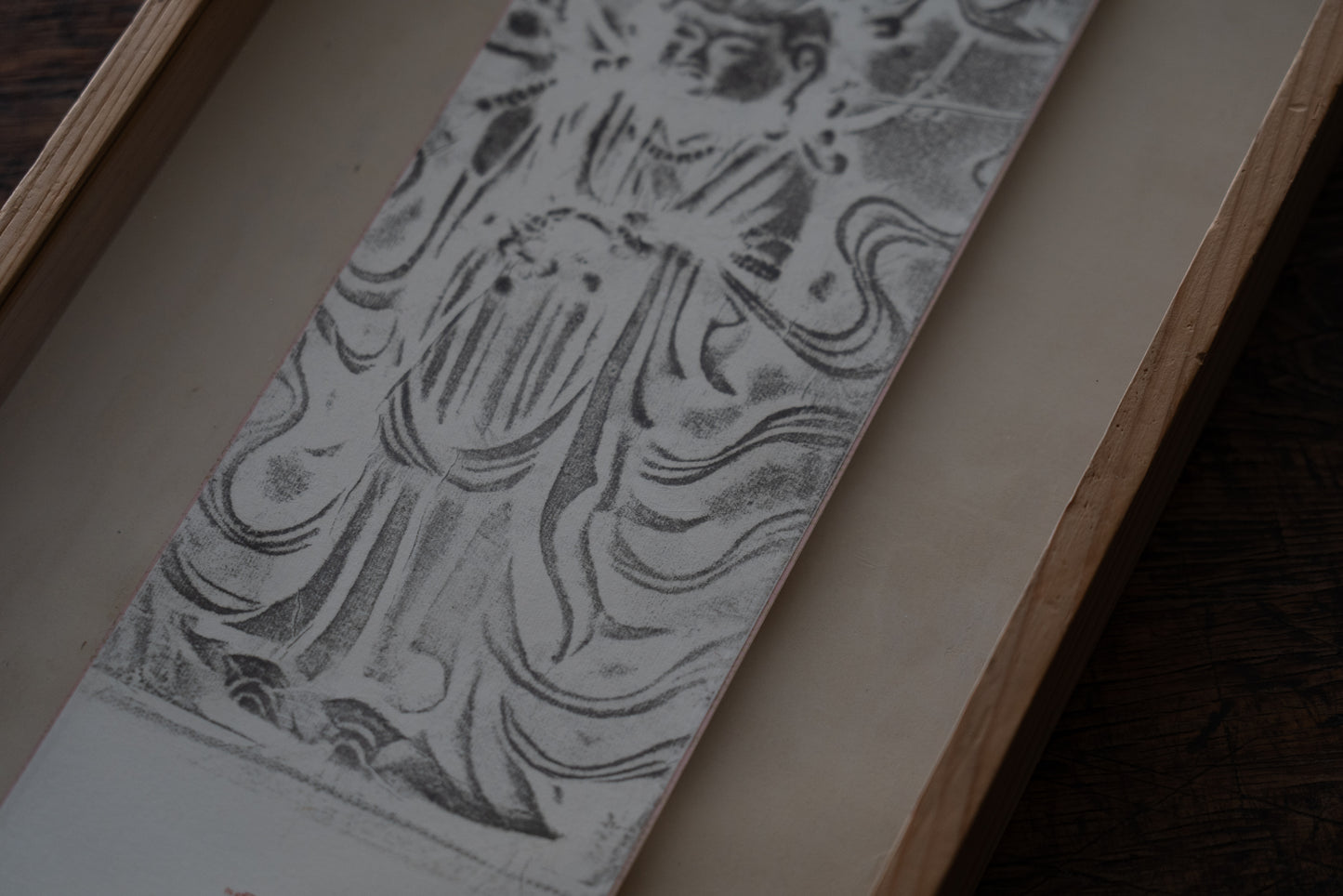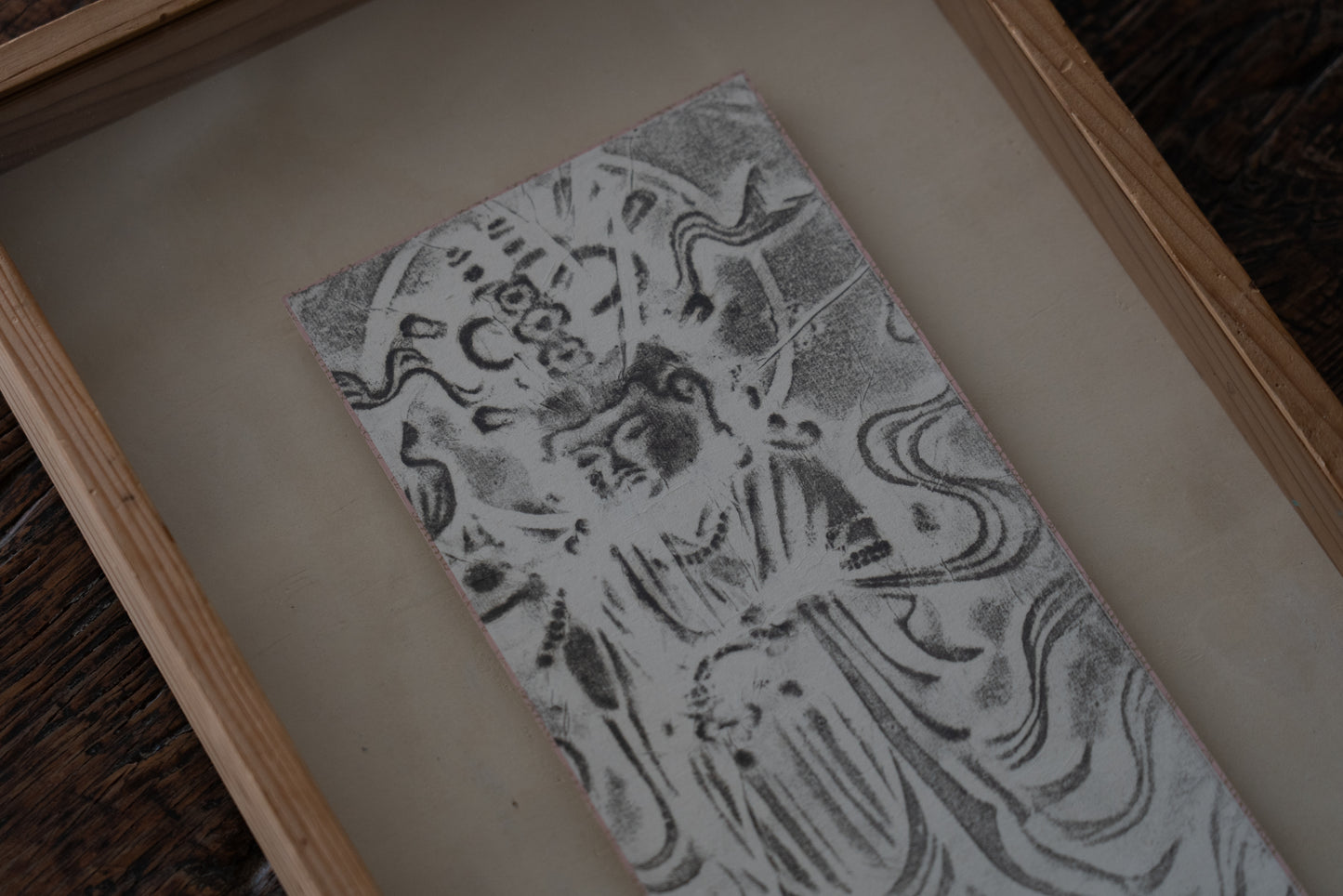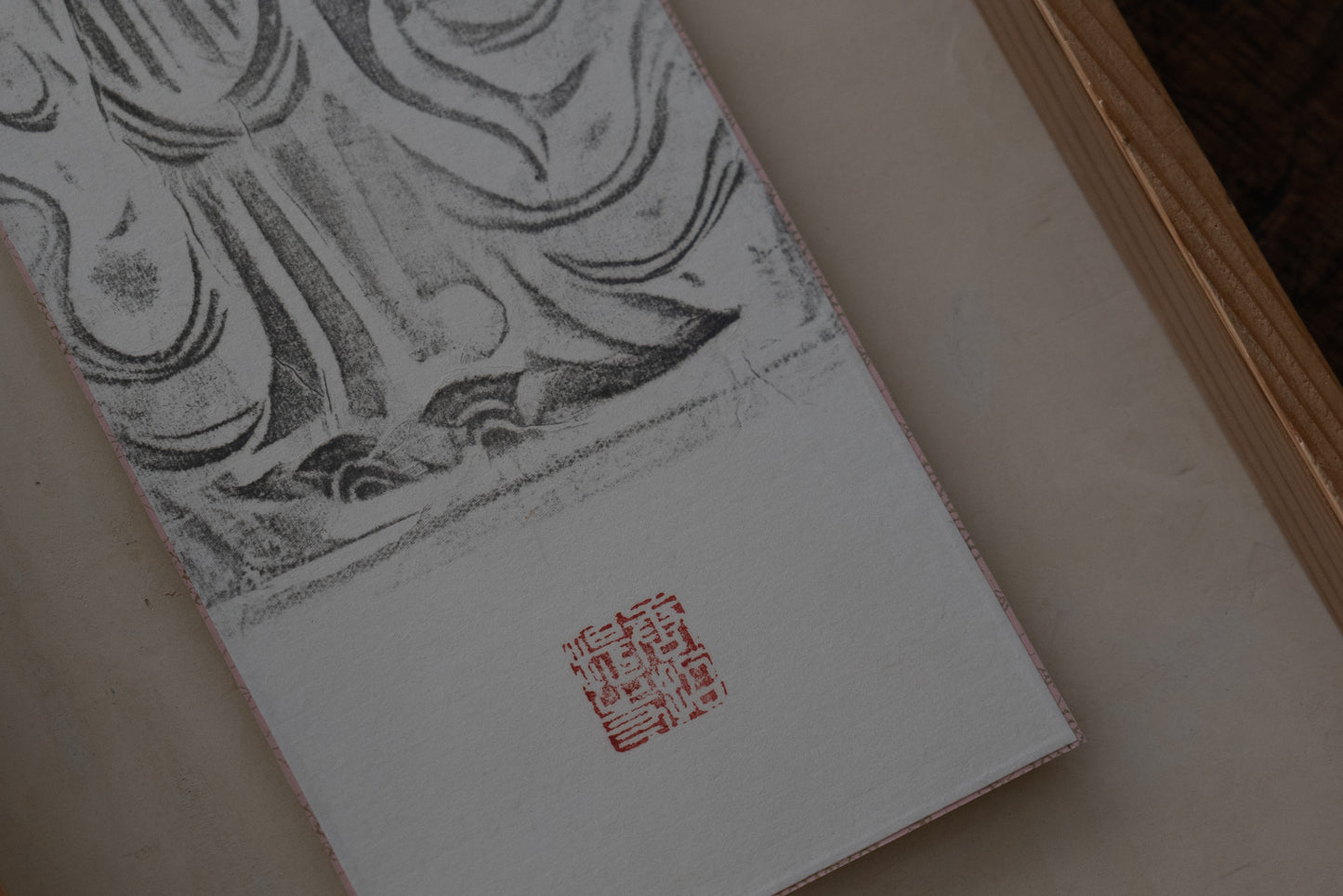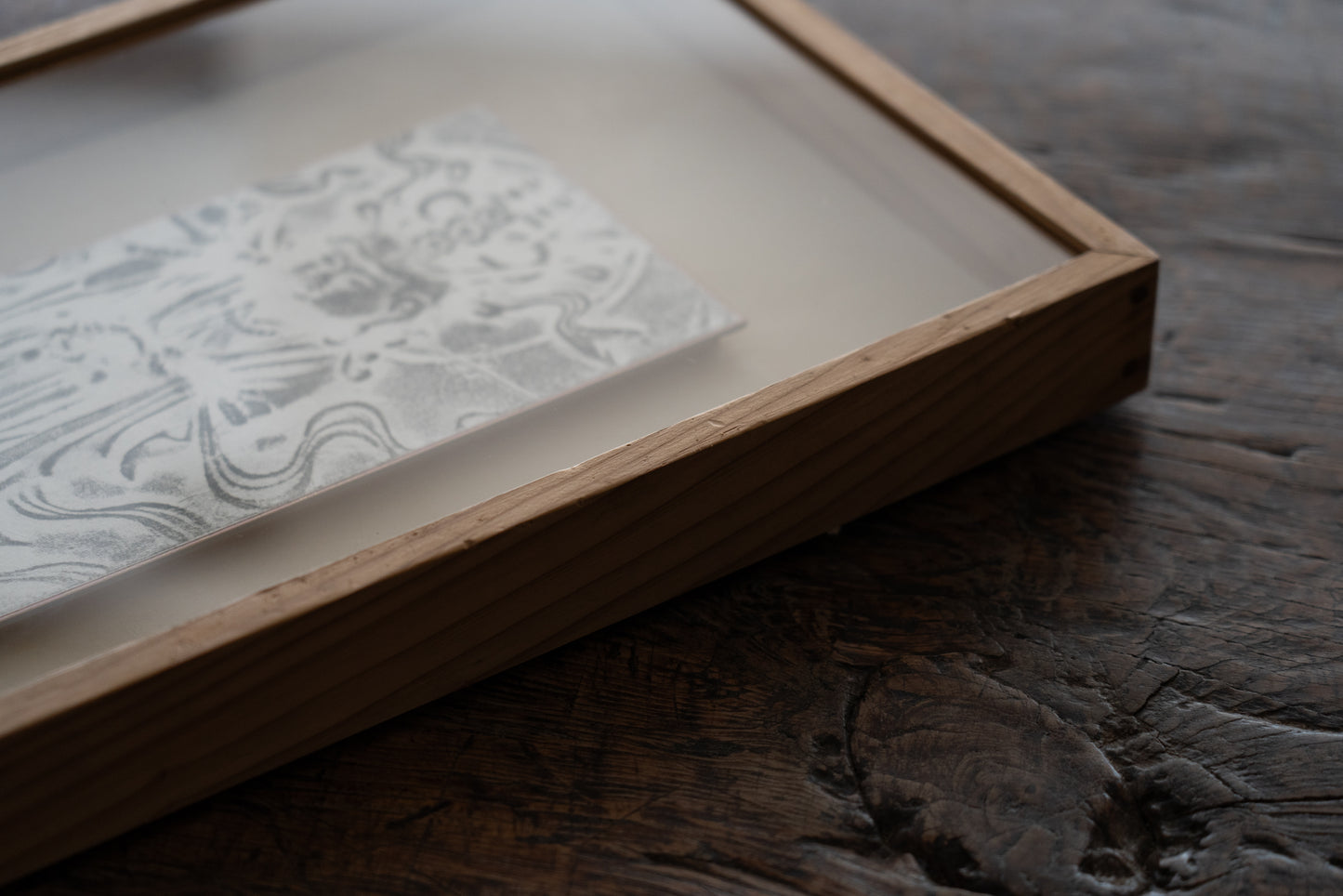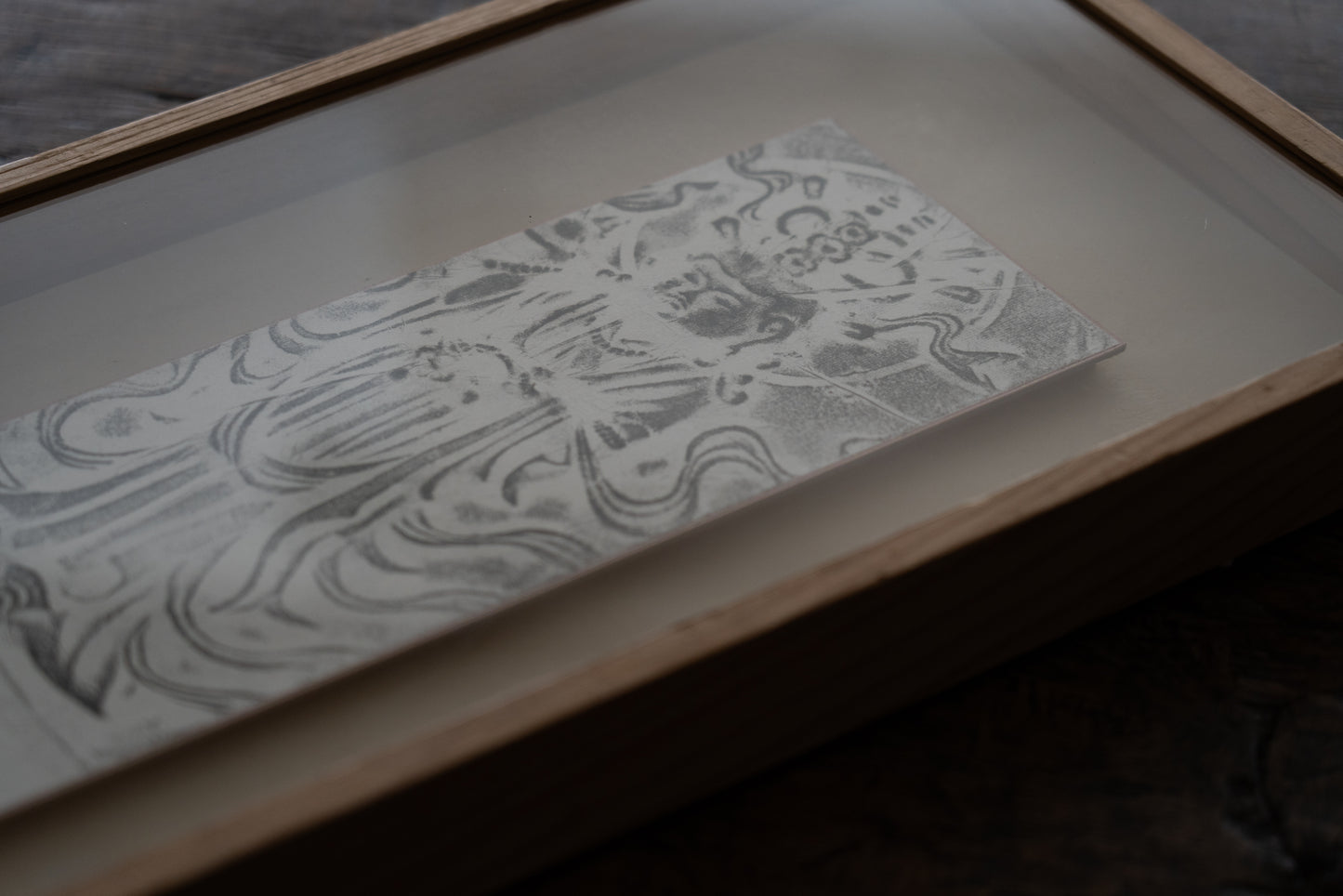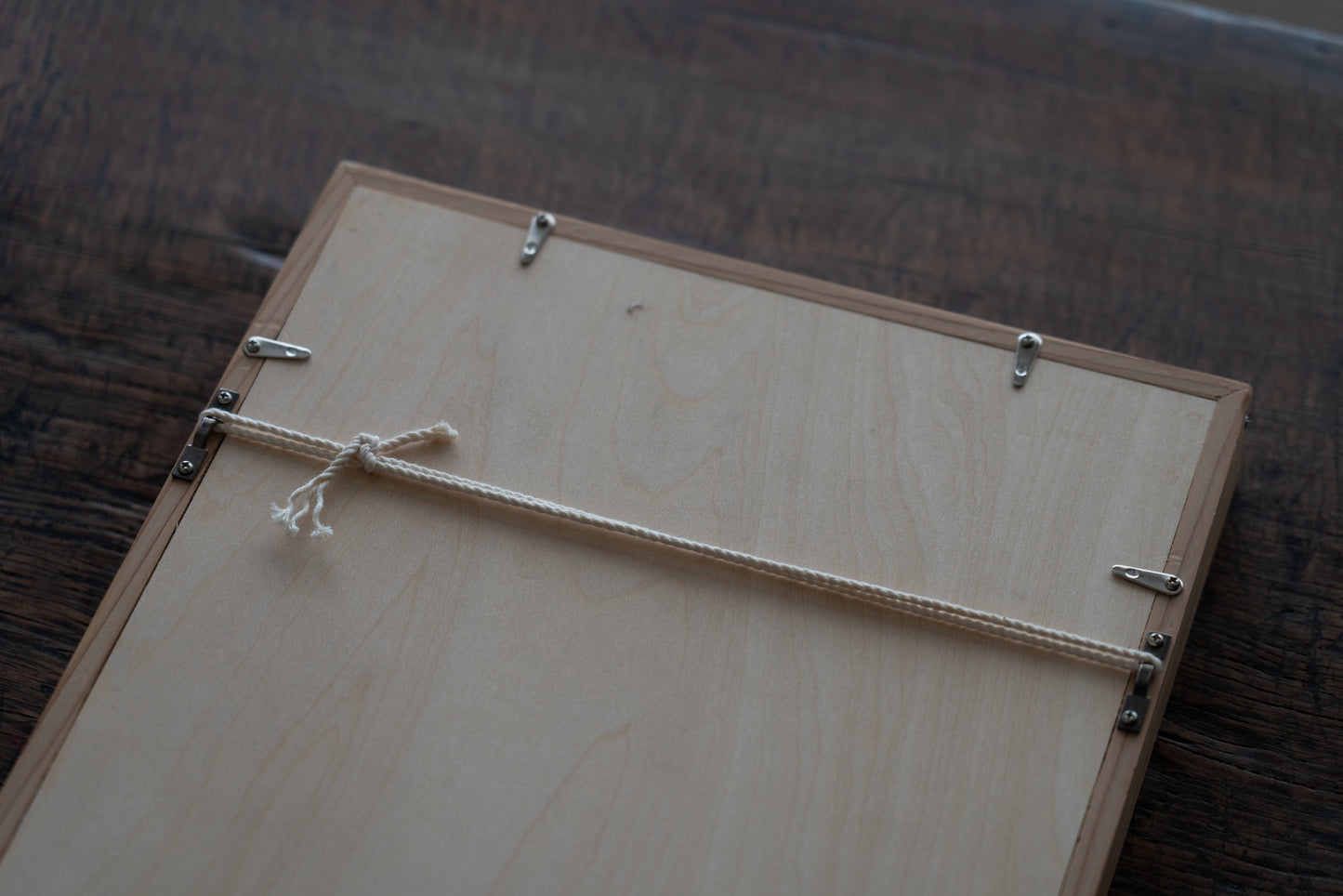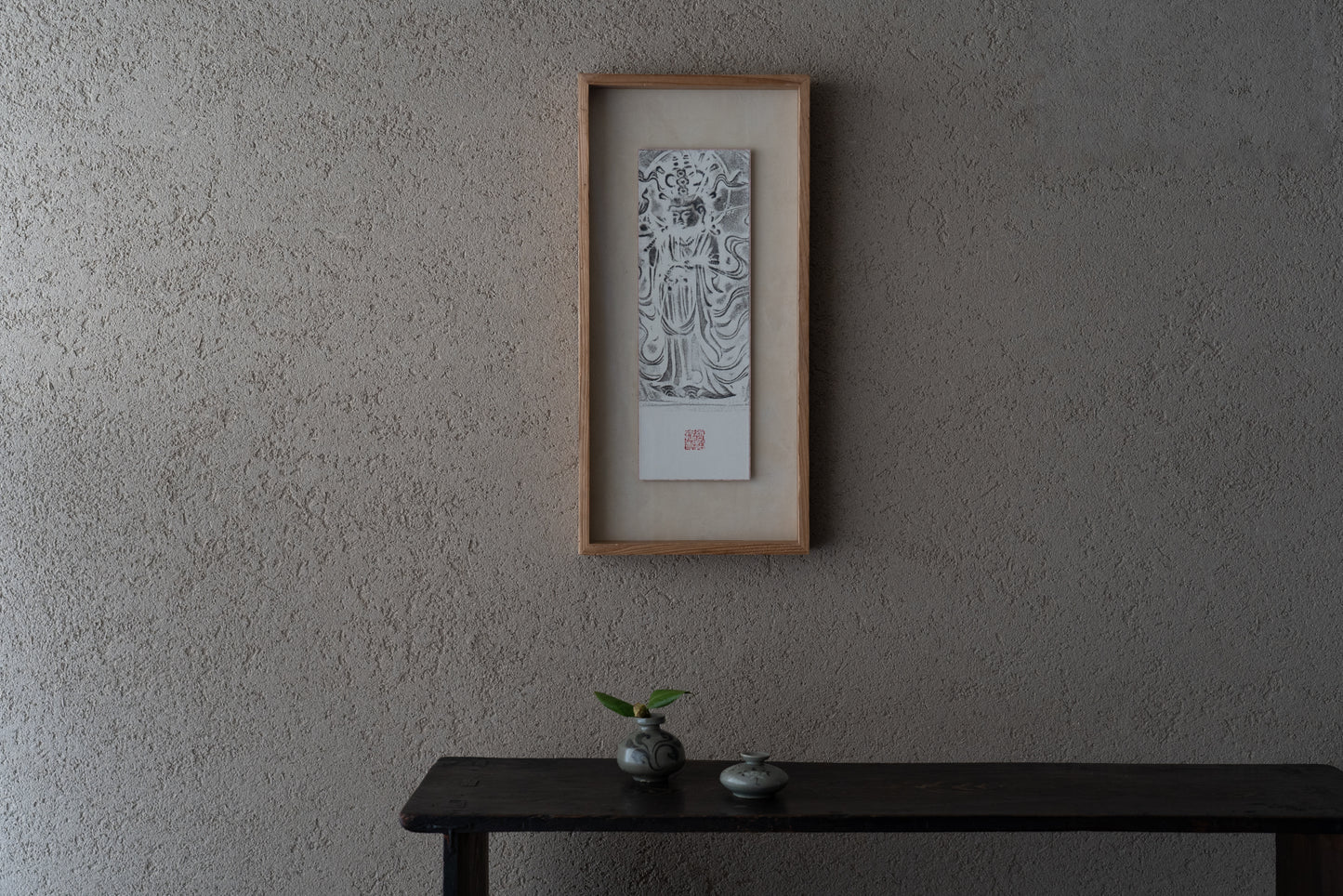Rubbing of the copper plate of the standing statue of Kisshoten from Toshodaiji Temple
- Region/Era Japan / Showa era
- Size [本紙]H36.5×W12.0㎝ [額]H52.3×W25.3㎝
- Condition Good
- Accessory none
- No. 39nk-95
This is a carefully made rubbing of the copper plate standing statue of Kichijoten, which is housed at Toshodaiji Temple in Nara.
Rubbings of this statue are often seen on the market, but this work has been carefully reproduced down to the ink color, shading, and fine details, and I believe it is a piece that allows you to fully enjoy the charm of the original copperplate standing Kichijoten statue.

Since I had the chance, I decided to use A little bit about the copper plate extruded standing statue of Kichijoten.
The technique of extrusion Buddha was introduced to Japan via China and Korea between the end of the 6th and 7th centuries. Japanese craftsmen learned the technique of pressing a thin copper plate against a mold and hammering it out to create an image from the Korean peninsula, and made many extrusion Buddhas, but the technique died out in the 8th century.
The copper plate Kisshoten standing statue is made from copper plate only 0.6 mm thick, and is a masterpiece that represents extrusion Buddhas from the Hakuho to Nara periods, with delicate expression from the facial expression to the folds of the clothes. It was made in the 8th century, when the Japanese style was more advanced, and is characterized by its pictorial and soft expression.

What distinguishes this Buddha from other extruded Buddha statues is the halo.
Normally, it is pressed against a convex surface, Only the head of the copperplate statue of Kisshoten is depicted as concave, which is why the halo appears as a white circle against the surrounding ink in the rubbing.
Perhaps it is a special expression of the light that makes the Buddha a Buddha. The white halo that remains gives the monochrome rubbing even more depth.

Kisshoten's adorable round face and pointed nose, The costumes fluttering in the wind are somehow seductive, evoking a Japanese sensibility that is separate from the power of the continent.
It is simple and well suited to modern home environments. Please enjoy displaying it.

To pick up and see the actual item in the gallery.
Reservation